Some Monday thoughts on various topics in complex systems. As ever, if you see something to which you want to draw my attention, email me.
01. Canadian Housing as Pyramid Scheme
Canadian real estate is weird. It soared with the U.S., during the real estate bubble, settled back slightly, then soared some more, then fell a tiny bit, and then soared a whole bunch more. It is now among the priciest real estate markets on earth.

One large factor in all of this, alongside low interest rates, is population growth: more people, and more housing demand. But it's not that Canadians are having more babies. Like most people in most developed countries, they aren't having enough children to maintain growth, or to avoid an inverting population pyramid.
To drive the point home, here is a very steep population pyramid, that of Kenya, one of the demographically youngest countries on earth.
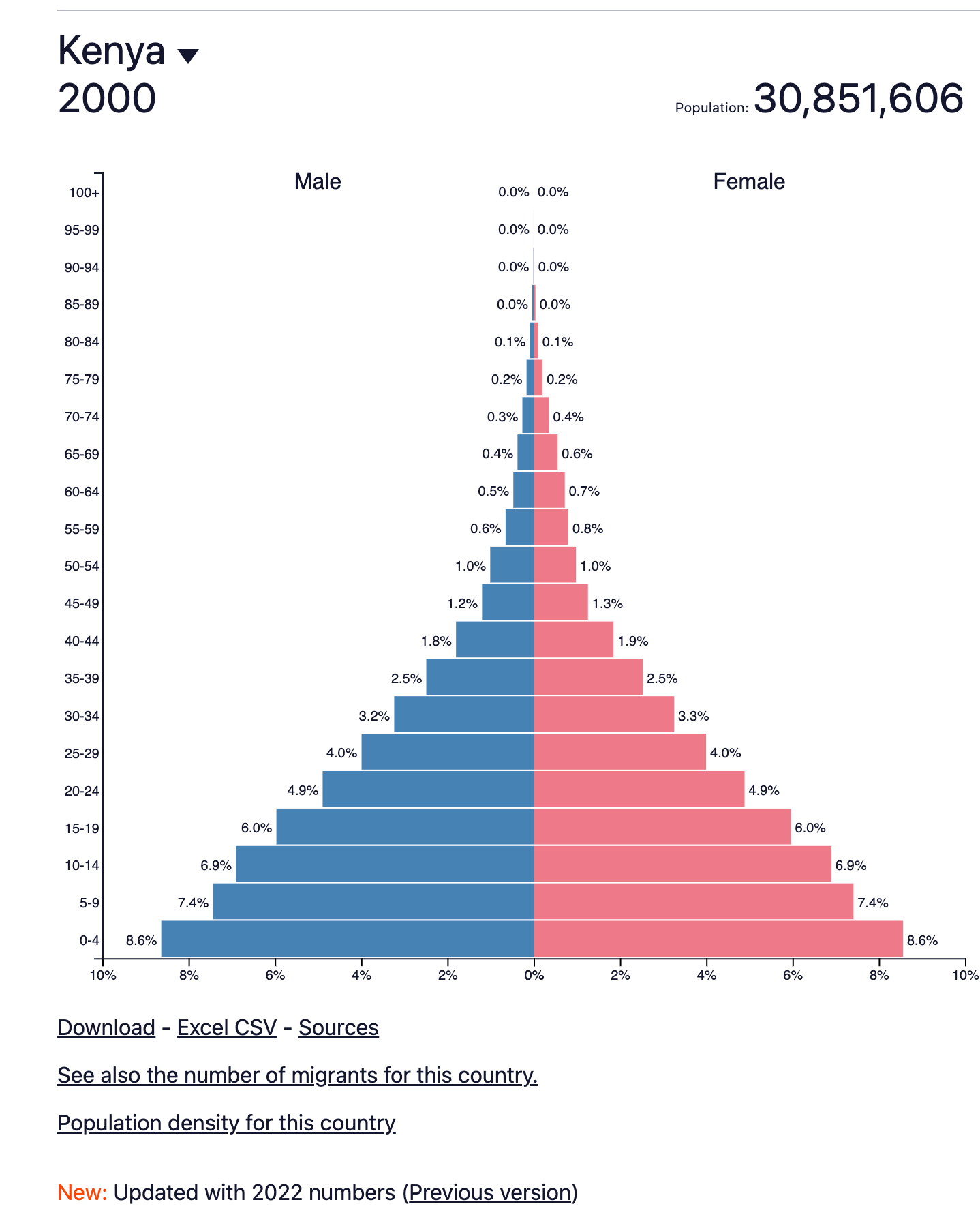
Now compare that to Canada, both in 2000 and projected for late this century. Note that this flattening and fattening structure isn't materially different from that of the U.S., Germany, or most developed countries.
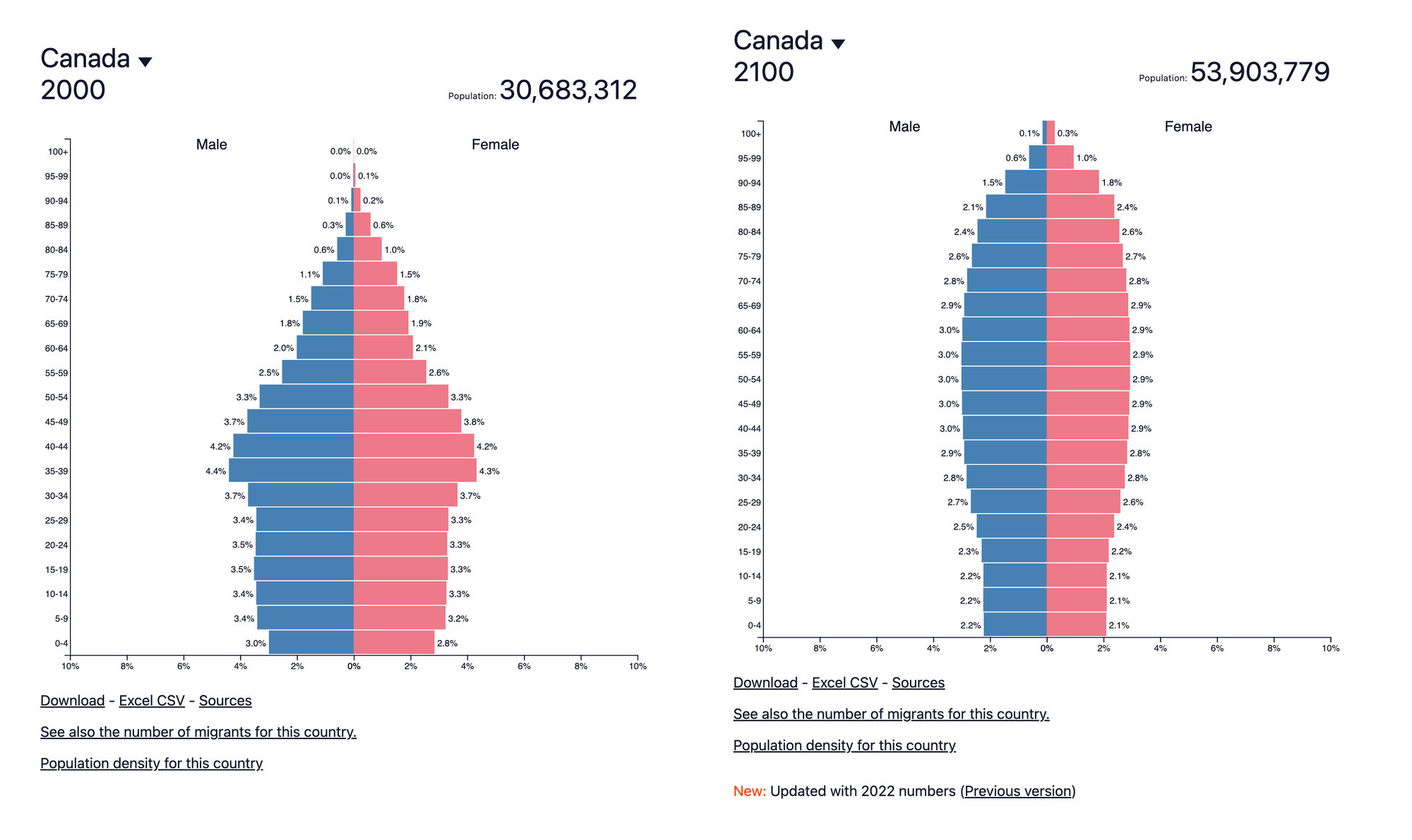
Why do we care? Because as the mean age increases, pyramids fatten and can even invert, to the point that a relatively small number of younger people's labors support much larger cohorts of middle-aged and older people.
The orthodox answer is that this is wrong and must be "fixed". After all, in the limit, a society with one young person supporting millions of people in retirement doesn't work, so there must be a point at which the inverting population pyramid either breaks social systems or must be somehow altered.
Before asking whether this is actually true, it's worth looking at the proposed remedies. They tend to take two forms:
- Natalism: the promotion of and advocacy for childbearing, which builds the population base
- Immigration: bringing in more people from other countries to build the pyramid's base
Both of these can work, but they have very different effects, especially with respect to social stresses and speed of adoption. It is hard, for example, to add another 3% to population growth via natalism—as the old line goes, it takes nine months to have a baby, no matter how many people you put on the job. It is easier, in practical terms, to bring in large numbers of immigrants, as targeted as you like, whether by skills, age, assets, etc. (In Canada, by the way, this means you get extra immigration points for speaking French.)
Despite it being easier on a practical level to engineer a different population pyramid structure via immigration, in practice there are complications. For starters, where will they come from, by what criteria will they be brought in, and how will they be integrated into society such that rapid change doesn't create tensions? And if you solve those problems, you get second-order issues, like the price level impact of bringing in large numbers of monied immigrants.
To make this more specific, we see this playing out in Canada at present. With a growth rate in 2023 that will approach some sub-Saharan states—500,000 immigrants on a 40-million population base—it is contributing to, among other things, an endless housing boom. Canadian real estate prices are among the highest in the world, real estate was recently a quarter of GDP growth, and it consumes a larger share of Canadians' disposable income than almost anywhere else in the world. Canadian systems are being transformed via sprawl and via skyscrapers.
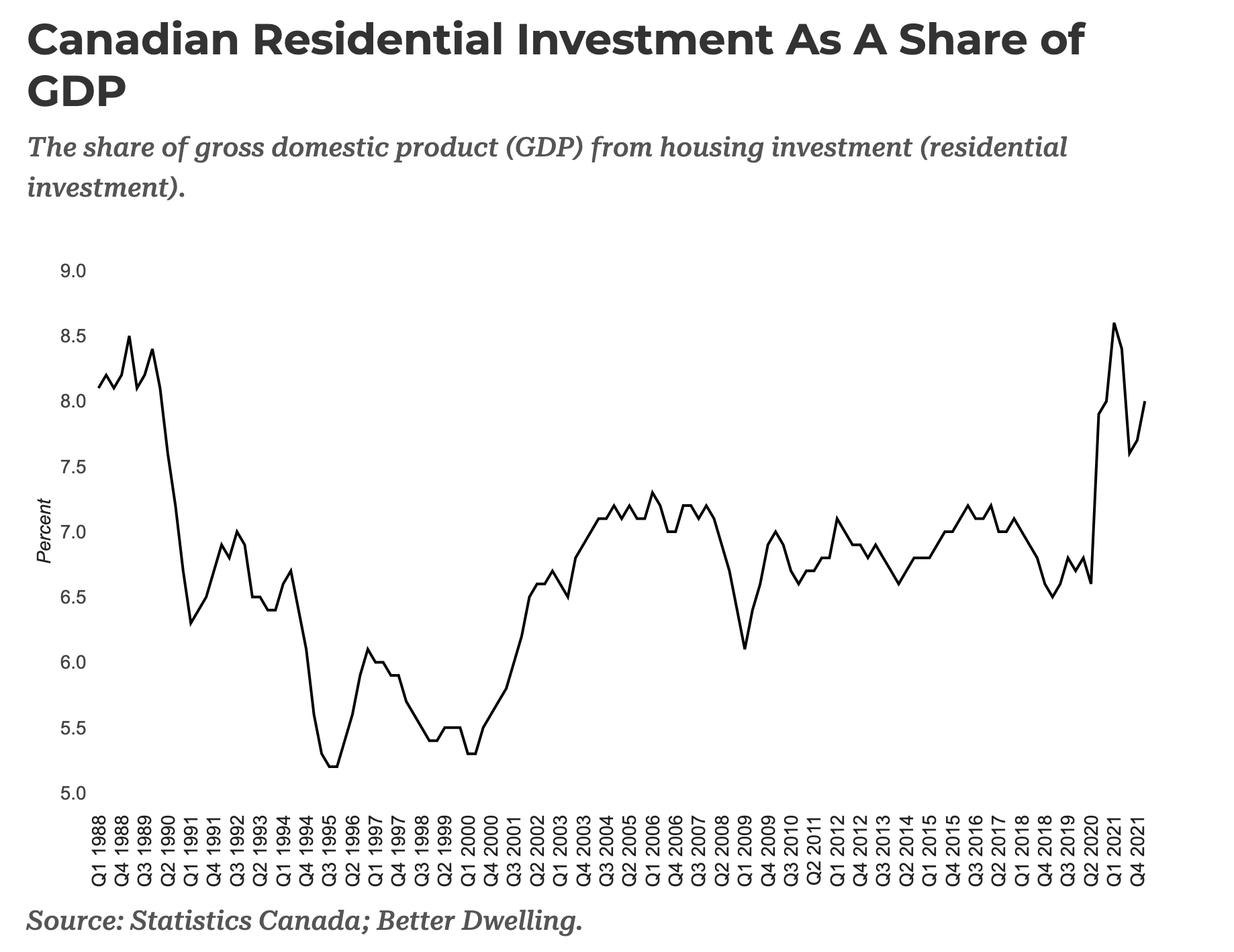
Do Canadians care? That is an interesting question. First, it's important to note that Canadian housing prices soared and stayed high well before the current attempt to re-invert the population pyramid there. Second, most middle-aged and older Canadians are net sellers, not buyers, and they are happy to have the price of their largest asset soar—even if detached from their U.S. neighbor, and from much of the rest of the world.
For young people, however, it's a different story. Most are priced out of Canadian housing and are forced to either take on huge amounts of debt, get help from their housing-rich parents, or forgo real estate altogether. They are looking increasingly to eastern provinces in Canada, as well as to the U.S., where prices seem comparatively cheap.
At a higher level, the hollowing out of the Canadian economy, and its transformation into a proxy for the real estate market, has economic consequences. Canadian productivity is declining and is now on par with some of the poorest U.S. states. At the same time, Canada's relative position among OECD countries is projected to continue to worsen, as the country's economy becomes increasingly real estate centric. The country is attempting various gambits to address this, like its recent offer of work permits to some U.S. H-1B visa holders, but that is small and longer term stuff.
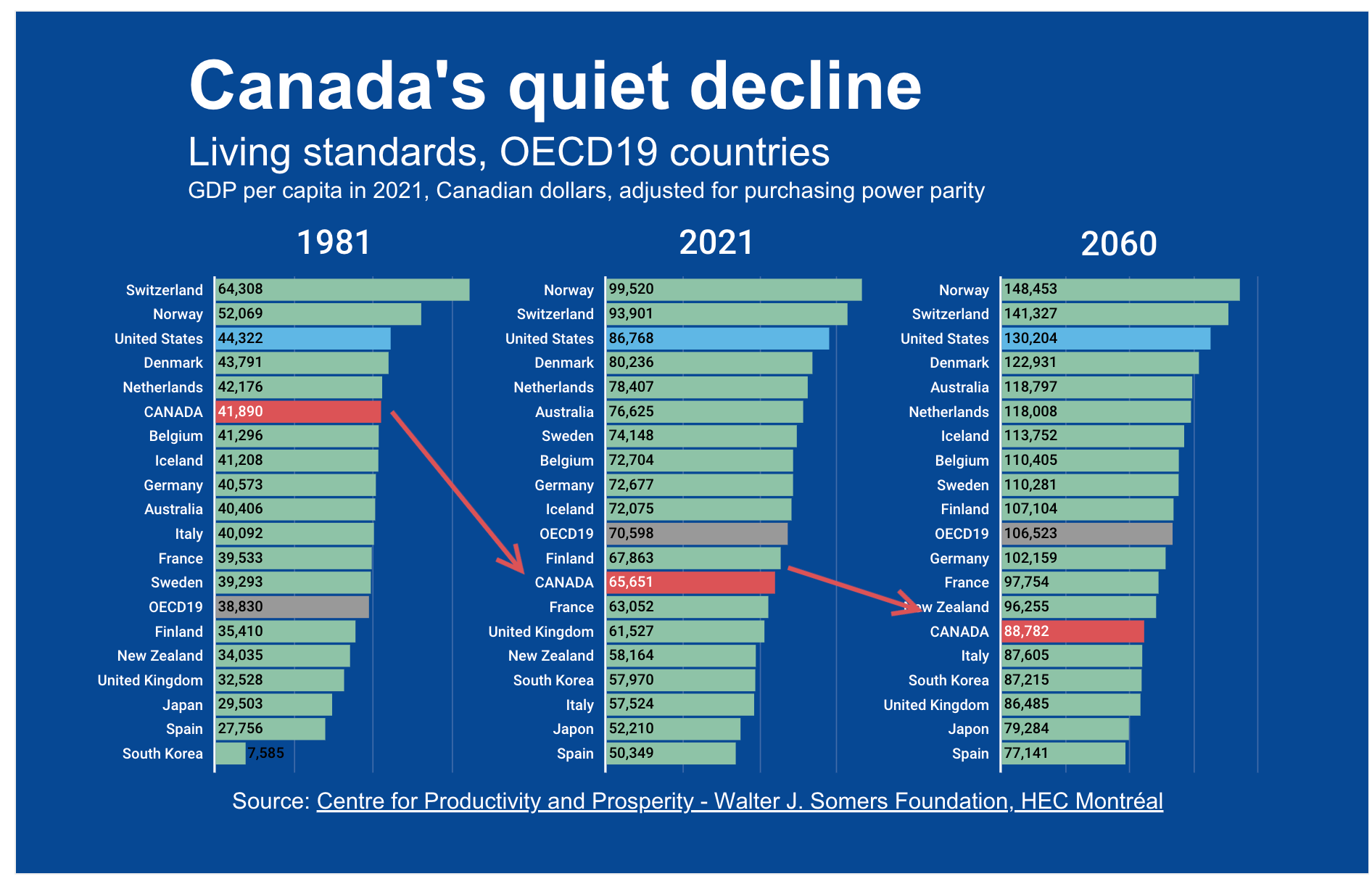
This focus on fixing the pyramid, for all its externalities, is understandable, of course. Countries with expensive safety nets require people to pay into those nets so that they can stay financially viable. To do otherwise and let the pyramid invert puts the country on an unsustainable fiscal path. But birth rates inevitably decline again, and those young immigrants become aging citizens, and the whole process must continue and even accelerate, given the growth in population, lest the growing pyramid re-invert, given it the appearance of a kind of Ponzi.
Can the problem be fixed without inverting the pyramid and repeatedly relying on future growth to solve present problems? That's an interesting question and one with which scholars have only begun to wrestle. One suggestion coming from work studying aging societies and automation is that an aging population is earlier to adopt automation, and can still grow, even if reliant on different sectors. Rapidly aging Japan has gone from something like 1-in-200 people working in elder care in 2000 to a projected 1-in-10 by 2035.
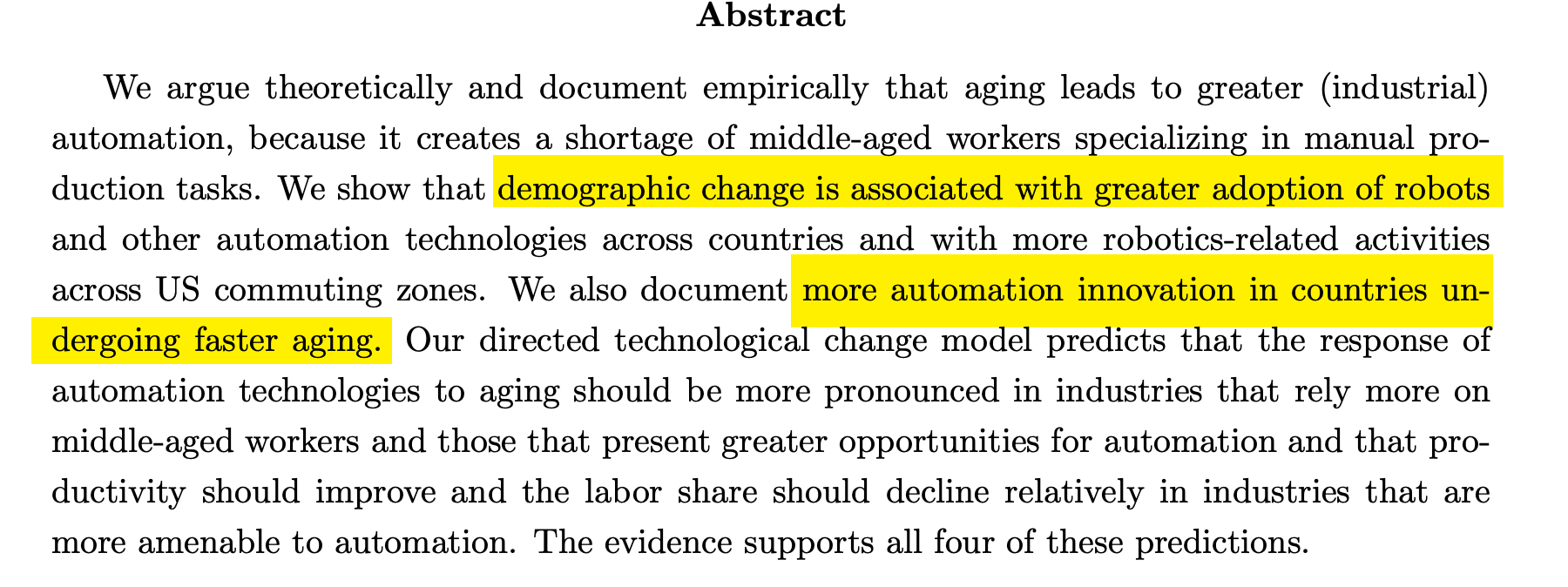
There are some suggestions that embracing aging early, as a society, could even turn out to be an advantage. Such countries will shift more rapidly to automation, have lower costs of goods and services, and have fewer stressors related to population growth. More cornucopian types resist this, however, given their view that population growth, in effect, pays for itself: More people, more creativity, more economic growth, etc.
To return to the Canadian experiment, and its broader import, if inverting the pyramid now requires 400m immigrants a year, what will it require in the future? This is the kind of math for which we have pyramid scheme calculators, and it is easy to demonstrate that, with time, the needs of the system become immense and intractable.
It will be ironic if some of the countries with the most fraught relationship to immigration—like the U.S. and Japan, albeit for different reasons—end up as accidental beneficiaries, despite their often indefensible rationales. Either way, the Canadian experiment in re-inverting the pyramid will be worth watching.
02. Paul Chats with a Paper
This week I'm talking with a recent NBER paper about the use of AI in radiology. It is often claimed that a human worker won't be replaced by an AI, but by a human with an AI. This paper attempts to test that idea in the context of radiology and comes to a very mixed answer. Note that radiology tends to be a kind of Rorschach test for AI buffs and critics, in that people see there what they want to see, so it is useful to have some actual data.

